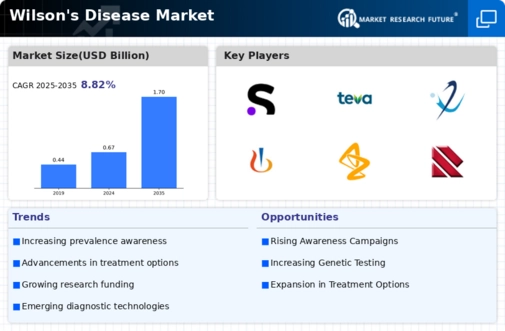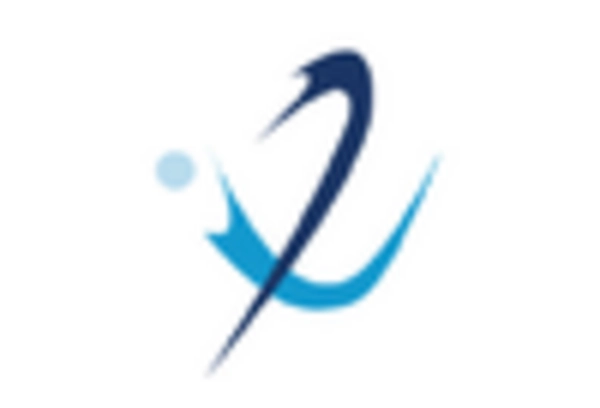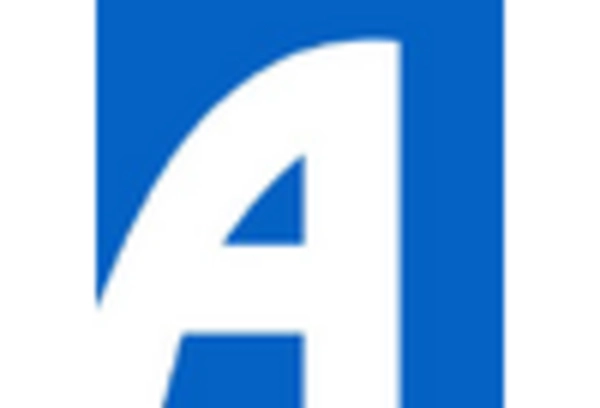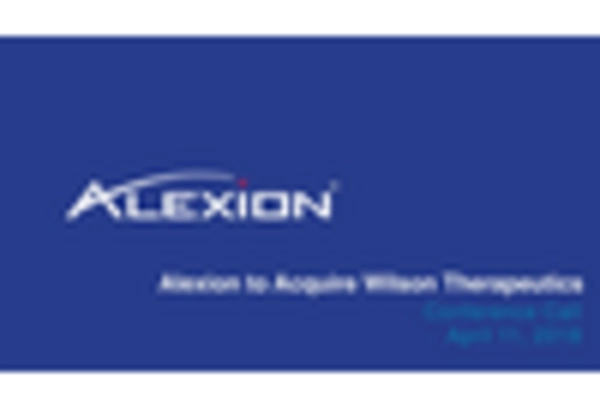Government Initiatives and Funding
Government initiatives aimed at improving healthcare access and funding for rare diseases are crucial drivers in the Wilson's Disease Market. Various countries have implemented policies to support research and development for orphan diseases, which includes Wilson's Disease. Increased funding for clinical trials and patient registries is likely to enhance the understanding of the disease and improve treatment options. Additionally, government-backed awareness campaigns can lead to earlier diagnosis and treatment, further driving market growth. The Wilson's Disease Market stands to benefit from these initiatives, as they create a more favorable environment for innovation and patient care.
Innovative Research and Development
Ongoing research and development efforts are pivotal in shaping the Wilson's Disease Market. Pharmaceutical companies are increasingly investing in novel therapies, including chelating agents and zinc-based treatments, which have shown promise in managing copper accumulation in the body. The market is witnessing a shift towards personalized medicine, with treatments tailored to individual genetic profiles. This innovation is expected to enhance treatment efficacy and patient outcomes, potentially leading to a more robust market. Furthermore, the introduction of new drugs and therapies could significantly alter the competitive landscape of the Wilson's Disease Market, attracting more stakeholders.
Increasing Prevalence of Wilson's Disease
The rising incidence of Wilson's Disease is a notable driver in the Wilson's Disease Market. Recent estimates suggest that the prevalence of this genetic disorder may be higher than previously understood, with approximately 1 in 30,000 individuals affected. This increase in diagnosed cases is likely to stimulate demand for treatment options and healthcare services. As awareness grows among healthcare professionals and the public, more individuals are being diagnosed earlier, which could lead to a surge in the market for therapeutic interventions. The Wilson's Disease Market is thus positioned to expand as healthcare systems adapt to manage this condition more effectively.
Technological Advancements in Diagnostics
Technological advancements in diagnostic tools are transforming the Wilson's Disease Market. Enhanced imaging techniques and genetic testing are enabling earlier and more accurate diagnoses, which is crucial for effective management of the disease. The availability of advanced diagnostic methods may lead to an increase in the number of diagnosed cases, subsequently driving demand for treatment options. As healthcare providers adopt these technologies, the Wilson's Disease Market is likely to experience growth, as timely diagnosis can significantly improve patient outcomes and reduce long-term healthcare costs.
Growing Patient Advocacy and Support Groups
The emergence of patient advocacy groups dedicated to Wilson's Disease is influencing the Wilson's Disease Market positively. These organizations play a vital role in raising awareness, providing education, and supporting research initiatives. They often collaborate with healthcare providers and pharmaceutical companies to ensure that patient needs are met. As these groups gain traction, they may facilitate better access to treatments and resources for patients, thereby increasing demand within the market. The presence of strong advocacy can also lead to more funding opportunities and partnerships, further enhancing the Wilson's Disease Market.


















Leave a Comment